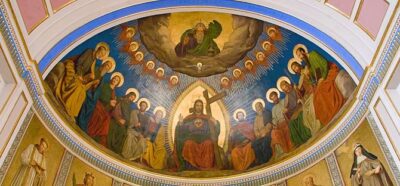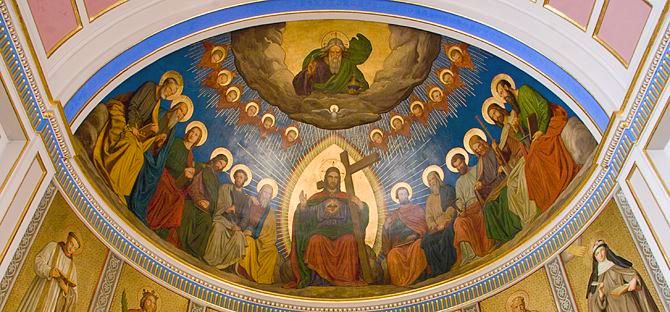This month, our ‘Christian Heritage month by month’ column presents the church of Saint Ansgar, with its rich history of resilience and neoclassical architecture, cathedral of the Diocese of Copenhagen, in Denmark. Click here for more info

(Photo: sanktansgar.dk)
The history of Saint Ansgar’s church starts in a climate of hostility, as the Danish King Christian the IV forbade his Danish subjects to practice their Catholic faith after the Reformation. However, celebrating Mass was allowed under the auspices of diplomats working at the royal court. For this reason, the first Catholic community in Copenhagen formed under the protection of the Spanish envoy and, later, the Austrian legation. Austrian empress Maria Theresa bought a piece of land in the current street where the church is located and built a chapel for the Catholic community. Through her financial support and that of a donation by Peter Bianco, a wine merchant, the church as we know it began to be built.
The construction of the present-day Saint Ansgar’s church began in 1840, following the project of German architect Gustav Friedrich Hetsch (1788-1864). Hetsch gave it a neoclassical look in the shape of a Roman basilica, with red bricks and yellow pattern bonds, a typically neoclassical façade and a large, open interior. Saint Ansgar’s Church owns an extensive collection of old paintings and sculptures. The original pews are still in use, and the Habsburg coat of arms still appears on some of them, reminding of the past protection granted by the Austrian Empire.
In 1864-65 the large apse was decorated with paintings executed in oil fresco, approximately corresponding to Hetsch’s original plan. The dome shows the Holy Trinity, while the middle of the apse represents the Virgin Mary with her hands folded in prayer, surrounded by Danish and Nordic saints. The originally clear large windows were later substituted by brightly coloured stained glass mosaics with a gallery of portraits of Saints on the initiative of Bishop Johannes von Euch. After Bishop Czeslaw Kozon’s appointment in 1995, the area around the altar was refurnished, with the bishop’s throne now placed in the middle of the choir.
With its impressive history of resilience, the church and cathedral of the Diocese of Copenhagen, survived and welcomed the increasingly larger Catholic community of the city, following in the missionary steps of the Saint it was then dedicated to: Ansgar, the ‘Apostle of the North’.
Visit the website of the Bishops’ Conference
Visit the website of the church of Saint Ansgar

